| Early Spring Date: | April 19 |
| Late Spring Date: | June 1 |
| Best Dates to See in Spring: | April 25 - May 31 |
| Has Nested in Park | |
Spring: Wood Thrushes begin to arrive at Monticello Park at the end of April, and the best time to look for them is during the first third of May. They are not in the same genus as the other spotted thrushes at Monticello, and they are the only spotted thrush species who sometimes nests in the park.
Fall: An average of about 20 Wood Thrush sightings are recorded each fall at Monticello. The numbers are higher in years when they nest in the park. The most likely time to find one is during the third and fourth weeks of September.
Where to See Them in the Park
Wood Thrushes forage on the ground or on logs. The males often will sing from a low perch in a tree or bush. The best place to look for them is on the ridge and on the knoll near the back of the park. They sometimes bathe in the stream, usually in the midstream area.
Physical Description
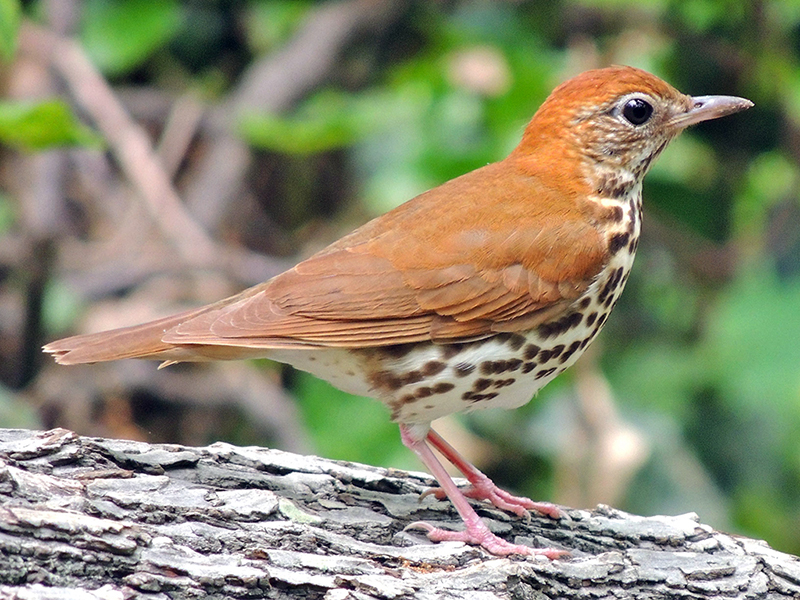
Adult male and female Wood Thrushes look similar, and plumage does not vary between the spring and fall. The Wood Thrush is the largest and the warmest brown of any of the spotted thrushes. The head is a brighter reddish-brown than the back. Wood Thrushes have an eyering, and their eyes are large so that they can see well on dark forest floors. The sexes are similar.
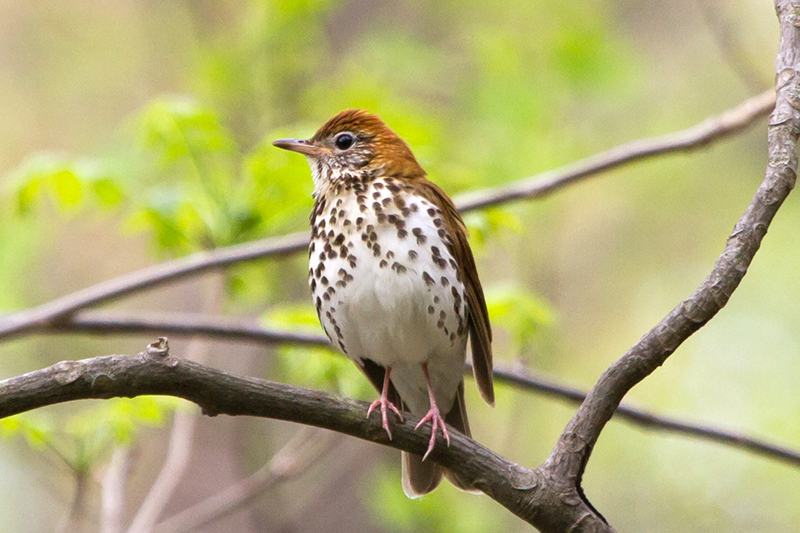
The breast spotting is bolder than on the other species.
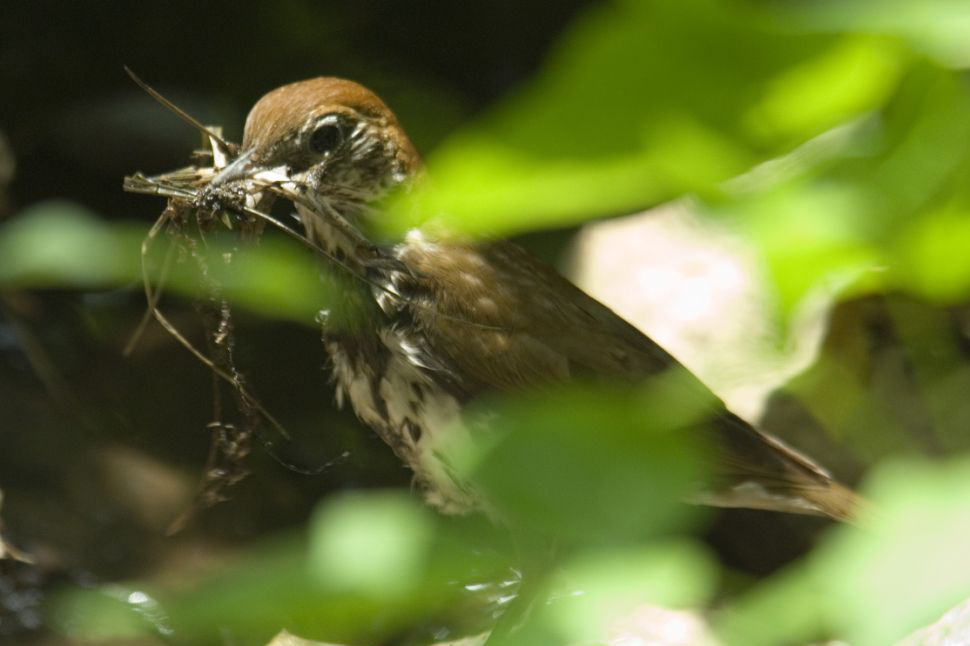
Wood Thrushes at Monticello are sometimes seen gathering nesting material.
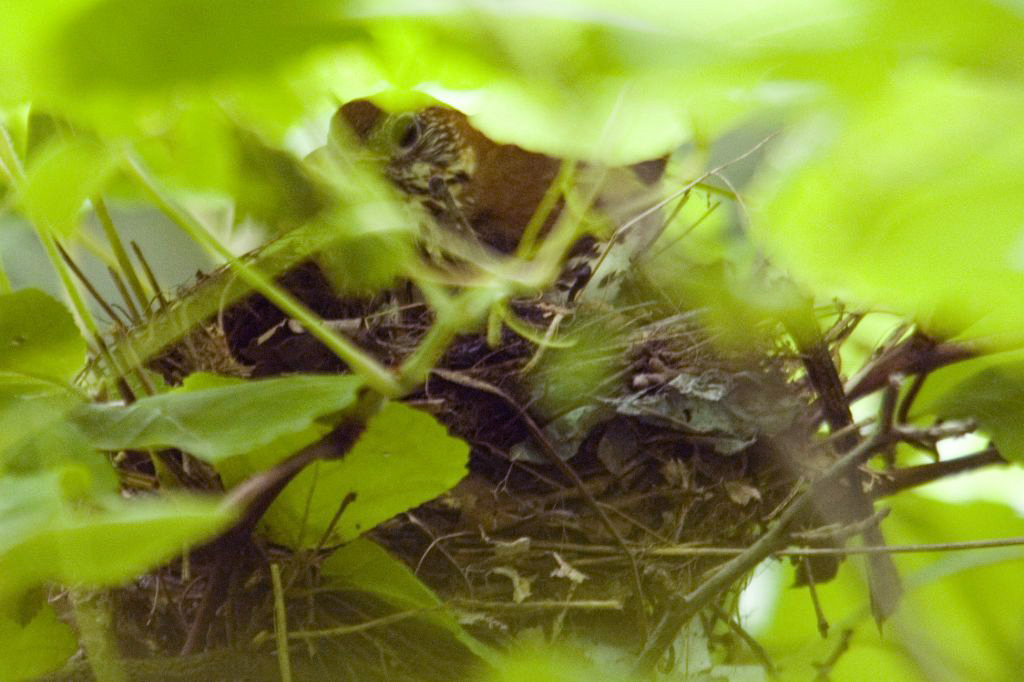
A Wood Thrush nest looks like the nest of an American Robin. It is a cup molded by the female, made from grasses, mud, bark, and other materials, usually with dried leaves on the outside. The female lays 1 to 6 unspotted blue-green eggs. Incubation lasts 12-13 days, and baby birds stay in the nest 12 to 14 days. The female does all of the incubation, and the male brings about two-thirds of the food to the nestlings. Wood Thrushes sometimes raise more than 1 brood during a nesting season.
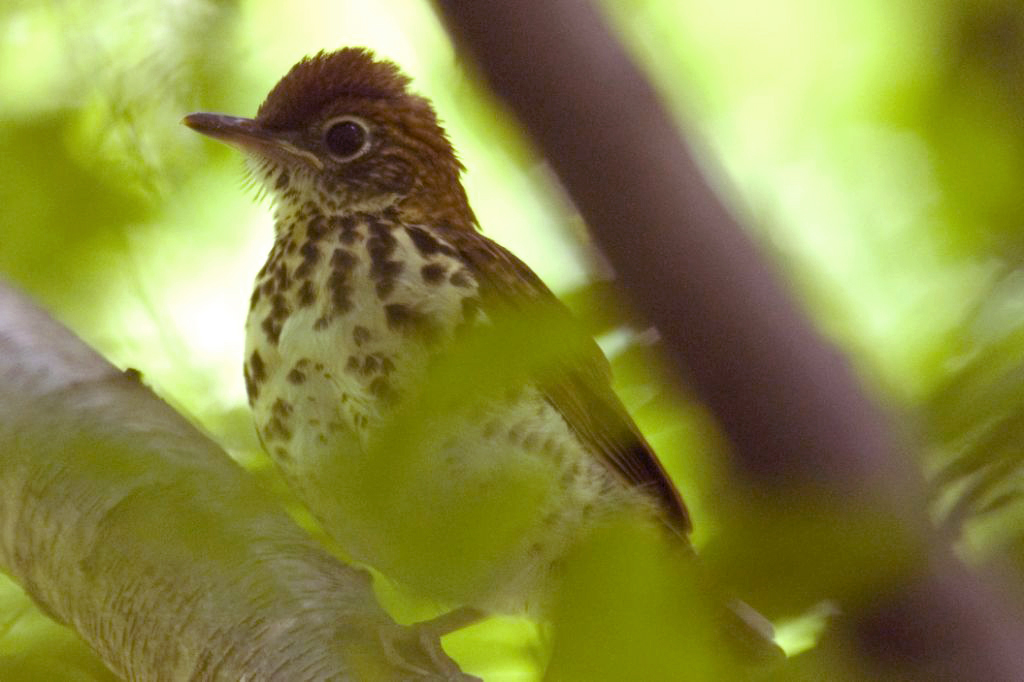
The fledgling period lasts about two weeks. When the nestlings fledge, they have skin protruding from the base of their bill that resembles tiny lips. The lips are called flanges, which is same word used by plumbers to describe the rim of a pipe. The gape (inside of the mouth) on the baby birds of many species is a bright color, both to provide a target for an adult to stuff food and to stimulate the adults to provide food. When young Wood Thrushes become independent, the flanges disappear.
Vocalizations
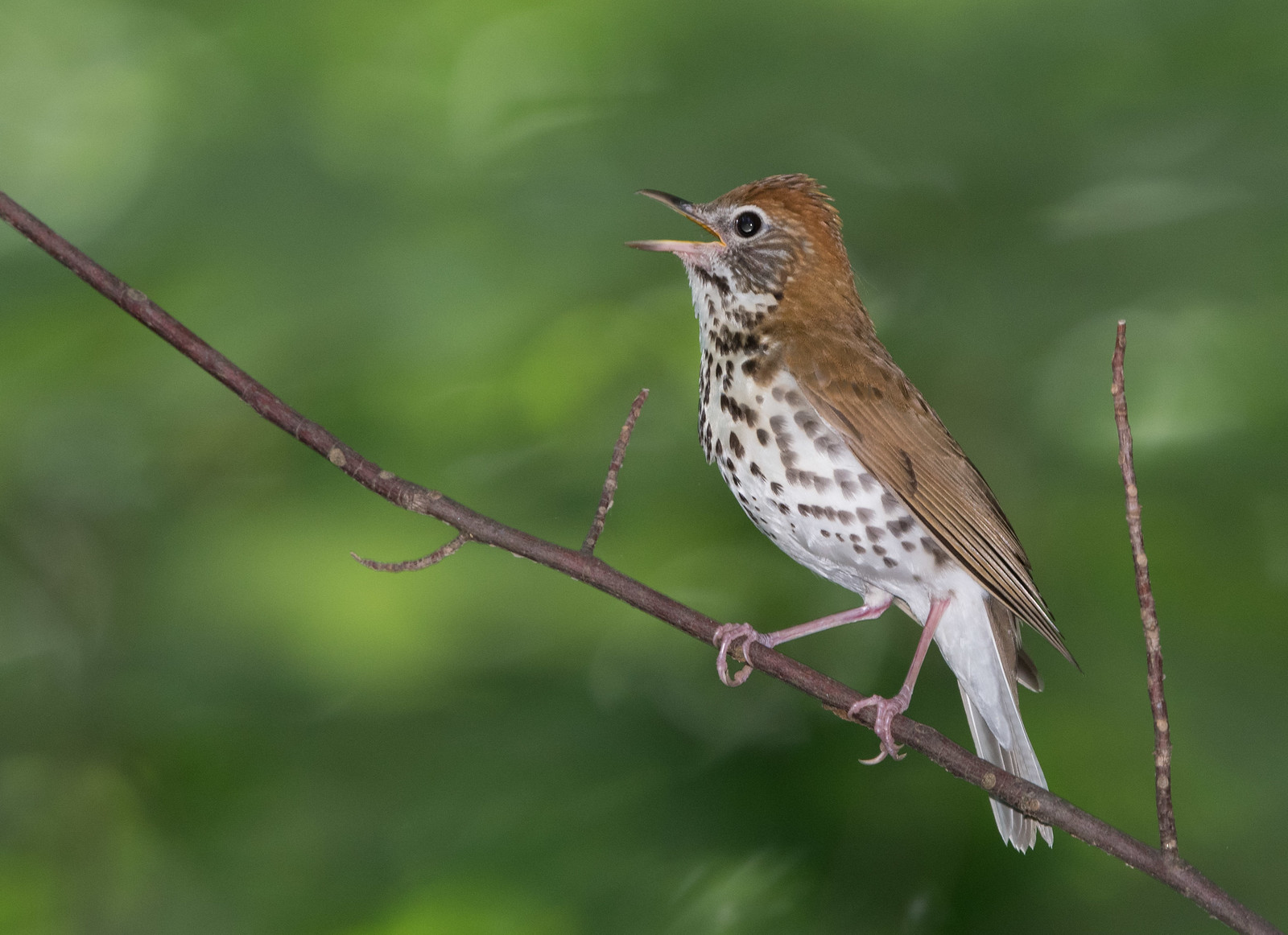
The Wood Thrush has one of the most beautiful songs of any species at Monticello Park. The ethereal flute-like whistle sounds like ee-oh-lay. When Wood Thrushes establish a breeding territory at Monticello, you can hear this beautiful song on most mornings. The call is a fast pip-pip-pip.
Hear the vocalizations of the Wood Thrush.Notes
The Wood Thrush is the official bird of the District of Columbia and would become its state bird if DC ever becomes a state. Peter Schickele, best known for his PDQ Bach and public radio work, composed a piece of music based on the song of the Wood Thrush.
Origin of Names
Common Names: Wood because they are woodland birds. The origin of thrush is unclear, but it might come from the Anglo-Saxon thryce, which means thrush.
Genus Name: Hylocichla means forest thrush.
Species Name: Mustelina means weasel-colored.
Wood Thrush video footage
Return to the Index
